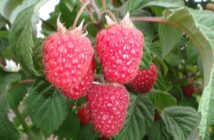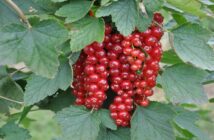CRD has issued an emergency 120-day authorisation for the use of Bayer insecticide Movento Top (spirotetramat) to control woolly aphid on apples.
This emergency was precipitated by the loss of key plant protection products. Until recently, woolly aphid (Erisoma Lanigerum) had been considered a sporadic pest of apple, which was sometimes present at low levels in orchards and only caused problems occasionally. However, following the loss of pirimicarb and chlorpyrifos last spring, woolly aphid infestations rapidly increased during the season to levels that caused not only alarm but crop rejections in some cases.
There was great concern that higher woolly aphid populations carried into winter 2016/17 would result in further escalation in infestations this year, leading to significant risk of crop rejections. It was estimated that circa 3,241 ha of orchards were significantly at risk and that the maximum economic impact on the industry could be in excess of £70 million.
AHDB Horticulture’s Vivian Powell, who led the application for the emergency authorisation, says: “It is great that we worked with growers, regulators and the manufacturer to obtain use of this new product that will help growers alleviate issues with woolly aphid. Our work is all about finding the solutions to problems that work effectively and efficiently and which can be integrated into IPM strategies.”
This authorisation permits a maximum of two treatments per crop, a maximum individual dose of 2.25 L/ha and a pre-harvest interval of 21 days. The final date for storage and use of stocks is 29th August 2017. The label specifies application from fruit size up to 10mm (BBCH 71) to the beginning of ripening (BBCH 81) and advises varying application rates according to crop canopy height.
Bayer campaign manager horticulture Tim Lacey describes Movento Top as a 2-way systemic insecticide based on spirotetramat, which works by inhibition of lipid biosynthesis. “It is transported within the plant by both the xylem and phloem so can therefore protect new growth that has not been sprayed directly. It must be applied when the crop is actively growing to enable uptake and redistribution to the tissues where woolly aphids feed and can ingest the active substance.”
He stresses that due to the mode of action, rapid knockdown should not be expected. “Obvious control usually occurs after three to seven days and is dependent upon pest stage, with youngest larvae being most susceptible and adults least susceptible. For optimum control, application should be made at the early signs of woolly aphids migrating from old wood to new shoots, so that population build up is prevented by targeting the very young larval stages as they are produced.”
Given the woolly aphid life cycle, Mr Lacey expects a first application will be required in late May or June. In situations of high infestation a second application may be required after a minimum interval of 21 days to prevent further multiplication.
Mr Lacey adds that Movento and Movento Top are not interchangeable. “Movento is an OD formulation containing 150g/L spirotetramat which has been authorised for use in vegetable and ornamental crops in the UK since 2009: it is not suitable for fruit crops.
“Movento Top is an SC formulation containing 100 g/L spirotetramat designed specifically for more sensitive crops like top fruit. It has been authorised in a number of European countries for a similar period, but not the UK, and has recently been reviewed and re-authorised by the Austrian authorities.”
Work is ongoing to obtain a full label authorisation for the use of Movento Top in the UK. For more information on this emergency authorisation refer to the CRD pesticides database https://secure.pesticides.gov.uk/pestreg/




